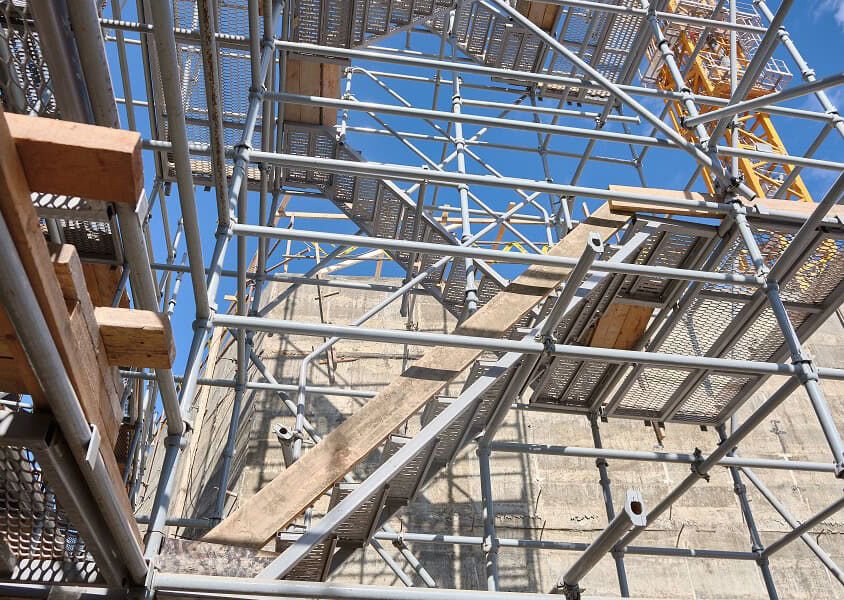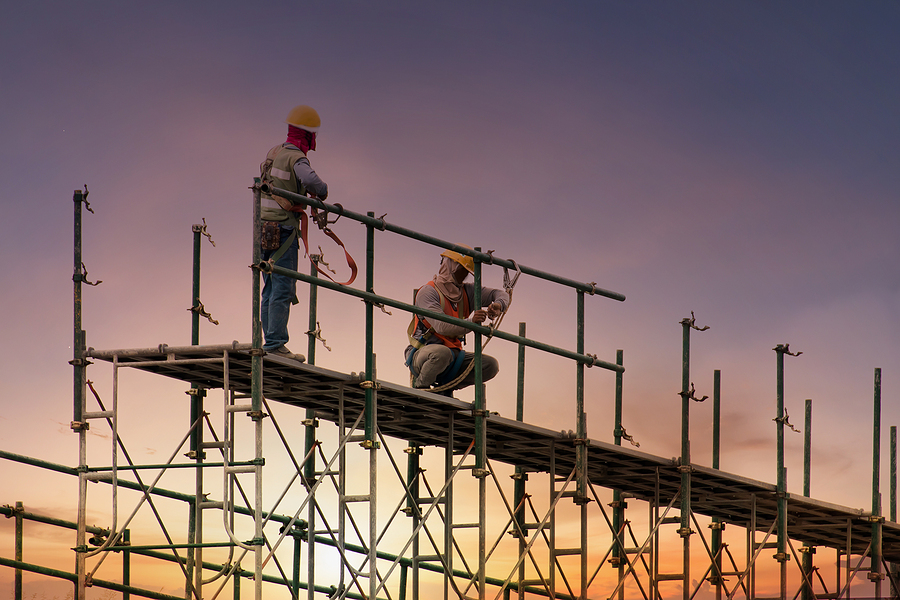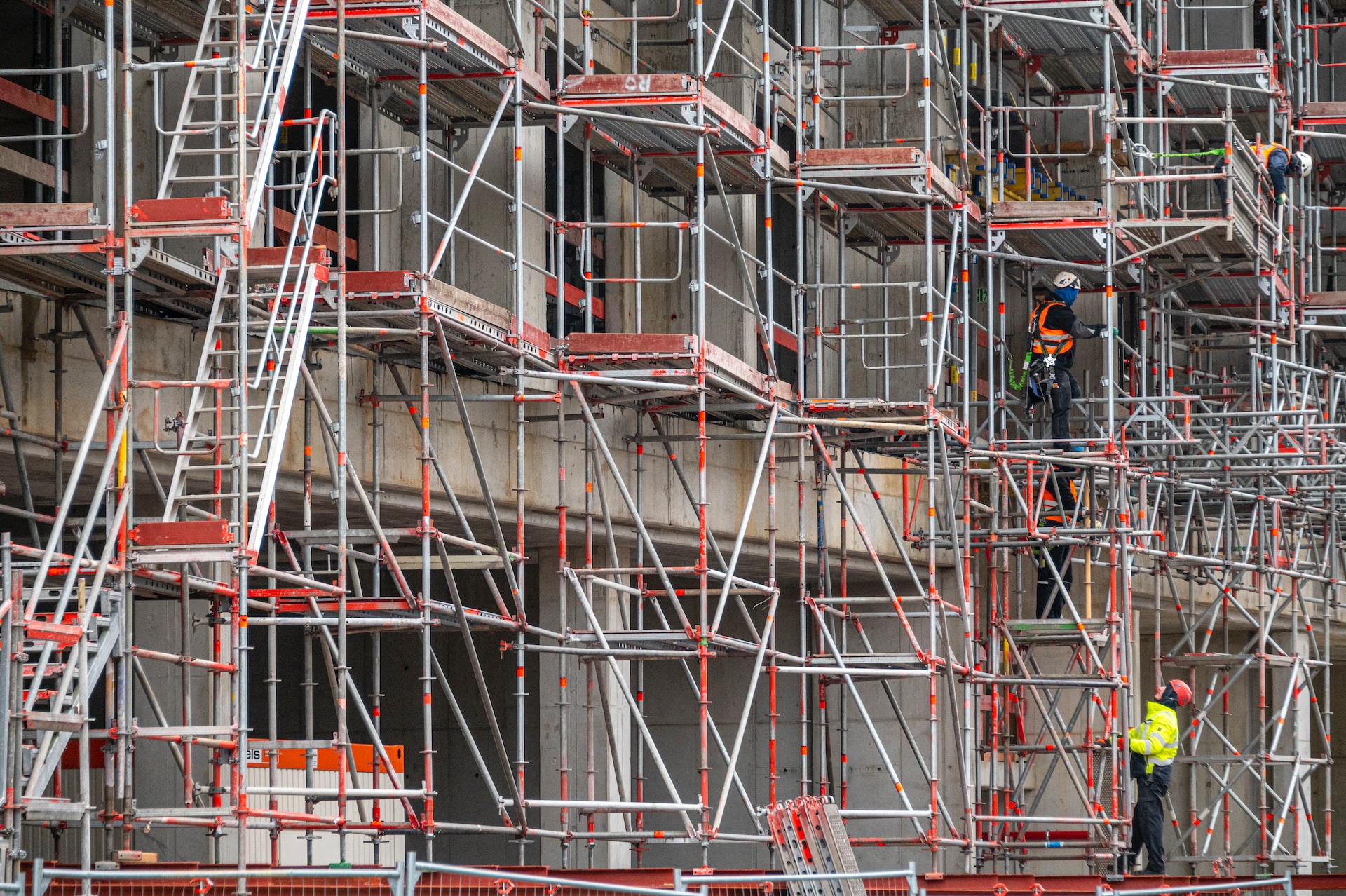Temporary Roof Scaffolding to Ensure Safe Working Conditions During Projects
Temporary Roof Scaffolding to Ensure Safe Working Conditions During Projects
Blog Article
Exploring the Different Sorts Of Scaffolding Used in Building Tasks
The construction sector depends greatly on various types of scaffolding to fulfill certain task needs, each offering distinctive advantages and applications. Conventional structure scaffolding gives a strong foundation for general jobs, while put on hold scaffolding is vital for work on skyscraper structures.

Traditional Framework Scaffolding
Conventional framework scaffolding is among one of the most widely made use of techniques in the building and construction industry due to its effectiveness and versatility. This system includes upright and straight frameworks that are put together to create a steady system for products and employees. The main parts consist of vertical articles, horizontal ledgers, and diagonal braces, which with each other offer a strong framework that can sustain significant lots.
One of the key benefits of traditional framework scaffolding is its versatility to different building and construction jobs, ranging from residential buildings to large industrial frameworks. The modular layout permits simple assembly and disassembly, making it effective for both temporary and long-lasting jobs. In addition, the system can be tailored in height and size, accommodating different structure layouts and site problems.
Security is extremely important in scaffolding applications, and standard frame systems are equipped with guardrails and toe boards to stop falls and ensure worker protection. Moreover, regular assessments and adherence to safety guidelines are critical in keeping the honesty of the scaffold. Overall, standard frame scaffolding stays an essential choice in the building market, providing a trustworthy platform for labor and boosting general job efficiency

Suspended Scaffolding
Suspended scaffolding offers a distinct solution for building and construction projects that require accessibility to elevated surfaces, particularly in scenarios where standard framework scaffolding may be unwise. This kind of scaffolding is normally put on hold from the roof or top degrees of a structure, making use of a system of wheels, ropes, and systems to develop a working space that can be gotten used to different elevations.
One of the main advantages of suspended scaffolding is its versatility. It can be easily rearranged or reduced to suit changes in construction demands, making it optimal for jobs such as window installation, façade work, and maintenance on skyscrapers. Furthermore, the very little impact of put on hold scaffolding permits better usage of ground space in urban settings, where area is typically restricted.
Safety is an important consideration in making use of put on hold scaffolding. Appropriate rigging and anchoring systems need to be utilized to ensure security and prevent accidents. Operators must additionally be educated in the risk-free use of this equipment. On the whole, put on hold scaffolding supplies a effective and reliable remedy for accessing hard-to-reach locations in numerous construction scenarios, improving both efficiency and safety and security on website.
System Scaffolding
System scaffolding, frequently concerned as a modern-day option in the scaffolding market, is composed of pre-engineered elements that can be swiftly constructed and adjusted for various building and construction tasks. Scaffolding. This sort of scaffolding is identified by its modular layout, which permits convenience and performance on work websites, fitting different elevations and structural demands
Typically made from high-strength steel or light weight aluminum, system scaffolding supplies enhanced resilience and security. The parts include upright blog posts, horizontal journals, and diagonal dental braces, which adjoin firmly, making sure a robust structure. The style frequently includes standard installations, streamlining assembly and disassembly processes, therefore lowering labor time and prices.

Rolling Scaffolding
Rolling scaffolding is a flexible option to traditional fixed scaffolding, created for mobility and convenience of use on building websites. This kind of scaffolding is composed of a platform sustained by frameworks with wheels, enabling workers to quickly move it as needed. The movement function dramatically boosts performance, as it minimizes downtime connected with constructing and disassembling fixed scaffolding.
Usually built from light-weight products such as aluminum or steel, rolling scaffolding uses a durable yet mobile solution for jobs requiring frequent repositioning - Scaffolding. It is particularly helpful in tasks such as paint, drywall installation, and electrical work, where accessibility to different elevations and areas is essential
Safety and security is vital in rolling scaffolding layout, with attributes such as securing wheels to avoid unintentional motion when being used, and guardrails to secure workers from drops. Furthermore, several models are adjustable in elevation, suiting various job needs.
Cantilever Scaffolding

The style of cantilever scaffolding generally includes making use of arms or braces secured to a structure or structure, making it possible for the platform to expand exterior safely. Safety is critical; therefore, these scaffolds must be crafted to withstand ecological conditions and numerous tons. Routine inspection and upkeep are crucial to ensure architectural integrity and worker safety and security.
Cantilever scaffolding is preferred for its flexibility and efficient use area, making it a popular choice in urban environments where room constraints prevail. Furthermore, it facilitates easier accessibility to high altitudes, ultimately adding to the overall efficiency of building tasks. Just like all scaffolding types, proper training and adherence to safety requirements are important for employees making use of cantilever scaffolding.
Final Thought
Standard frame scaffolding provides security, while put on hold scaffolding offers flexibility for elevated tasks. System scaffolding promotes fast setting up, and rolling scaffolding boosts wheelchair for differing work atmospheres.
Standard framework scaffolding provides a strong foundation for general jobs, while suspended scaffolding is necessary for work on high-rise frameworks.Rolling scaffolding is a flexible alternative to typical set scaffolding, created for movement and simplicity of usage on building websites. As with all scaffolding types, proper training and adherence to safety standards are crucial for workers using cantilever scaffolding.
Typical frame scaffolding provides security, while suspended scaffolding uses versatility for raised tasks. System scaffolding facilitates fast assembly, and rolling scaffolding improves mobility for differing job atmospheres.
Report this page